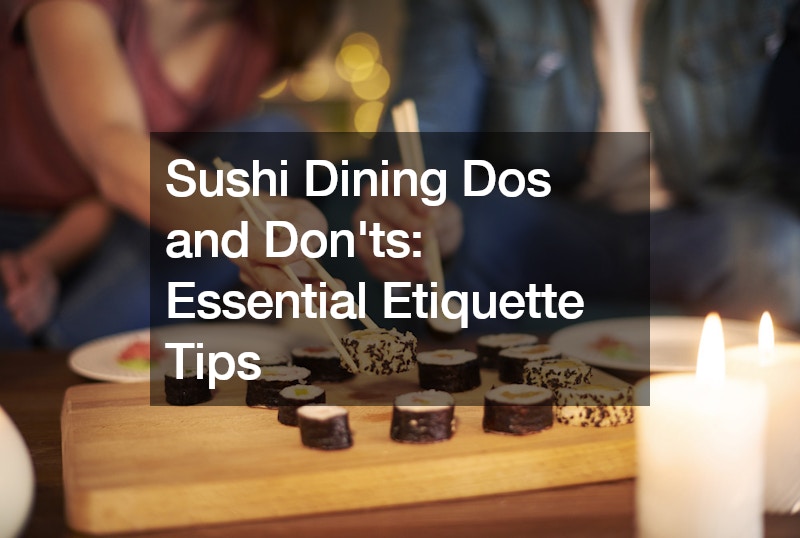
Sushi, a quintessential Japanese dish beloved worldwide, is not just about raw fish and rice—it’s a cultural experience steeped in tradition and etiquette. Understanding and adhering to these etiquettes can elevate your dining experience and show respect for the culinary heritage behind each bite.
Traditional Sushi Etiquette
In Japan, sushi etiquette is as revered as the art of making it. Here are some essential dos and don’ts to remember:
1. Eating with Your Hands vs. Chopsticks
In traditional sushi dining, nigiri—a type of sushi where fish is placed atop a small mound of rice—is often eaten with hands. The reason behind this practice is to maintain the delicate balance between the fish and rice, ensuring the flavors are preserved.
Conversely, sashimi, thinly sliced raw fish, should strictly be eaten with chopsticks to maintain its delicate form.
2. Proper Use of Soy Sauce
When dipping sushi into soy sauce, it’s crucial to dip the fish side rather than the rice. This method prevents over-saturation of the rice, which can lead to the sushi falling apart. The rice itself is already seasoned, so drenching it in soy sauce can mask its nuanced flavors. This practice respects the craftsmanship of the sushi chef who meticulously seasons each grain of rice.
3. Handling Wasabi Paste
Authentic sushi chefs often prepare sushi with a small amount of wasabi already placed between the fish and rice. Adding additional wasabi to soy sauce is generally frowned upon as it can overpower the delicate flavors of both the sushi and soy sauce. Wasabi is intended to cleanse the palate between different types of sushi, enhancing the dining experience without altering the original flavors intended by the chef.
4. Eating Sushi in One Bite
While it’s ideal to eat nigiri in one bite to experience the harmonious blend of flavors, it’s perfectly acceptable to take smaller bites if the piece is too large. The goal is to savor each bite without causing the sushi to crumble or lose its integrity.
5. Appreciating the Chef’s Craftsmanship
Sushi chefs undergo years of rigorous training to perfect their craft, often dedicating a decade or more to mastering the art of sushi making. Showing appreciation for their work by enjoying sushi as intended—respecting the portion size and savoring each piece—is a mark of respect and gratitude.
6. Avoiding Overly Strong Scents
In Japanese culture, excessive use of perfumes or strong scents is discouraged, especially during meals. These fragrances can interfere with the subtle flavors of sushi and diminish the overall dining experience. Opting for a neutral scent or none at all ensures that you fully appreciate the nuances of each sushi bite.
Conclusion
Mastering sushi dining etiquette goes beyond mere table manners—it’s a way to honor centuries-old traditions and the craftsmanship of sushi chefs. By following these dos and don’ts, such as respecting the use of soy sauce, handling wasabi paste with care, and appreciating the chef’s expertise, you can enjoy sushi in its truest form. Whether you’re dining in Japan or at your local sushi restaurant, embracing these etiquettes enhances your culinary journey and deepens your appreciation for this iconic Japanese cuisine.
.





